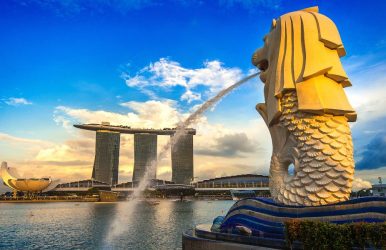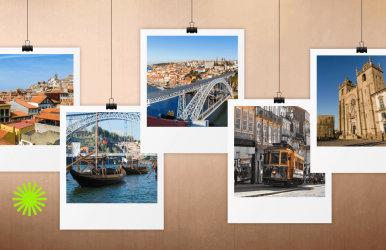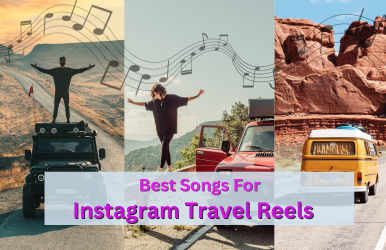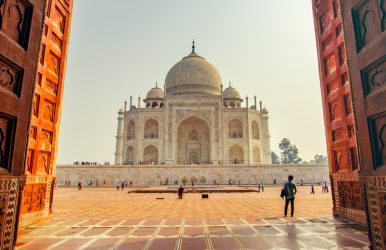What Are The Kotor Montenegro Free Activities For Budget Travelers? (Cheap And Free Are Not The Same)
BY Sibashree Dec 19, 2025
Do “Cheap” and “Free” ring similarly to you? Not to me, at least! I was researching free activities for my visit to Kotor, Montenegro. Every guide, trust me, every guide, was a random mix of cheap and free activities. And it’s almost 2026, the same problem lies with the so-called guides of Kotor Montenegro free activities. Everyone is actually discussing the cheap activities, or they are not giving the true picture and updates about free activities like the Kotor Fort through the Ladder of Kotor route. Did anyone tell you that the “Window” section for a free jump into the fort premises no longer exists? It has been blocked, and there is a turnstile at the entry point. You can still go for a free hike on that route, but it will no longer be a trek to the fort. So, if you are expecting a free sneak into the Kotor Fort, I would say, “Don't hike for 2 hours expecting to sneak in.” However, if you want to enjoy a free view of the Kotor Bay or the fort from outside the walls, I will say, “Go ahead!” Also, the bus rides in Kotor are never “Free!” They are cheap, yes, costing around 1 to 3 Euros for local transfers. However, one delightful thing that is absolutely free in Kotor is the cat therapy. I had the most adorable time with the cats of Kotor. These adorable animals are indeed the guardians of the city. In this Tour and Travel Blog, I will talk about the Kotor Montenegro free activities in detail. I will also touch upon the cheap activities to do in Kotor, Montenegro, and budget travel hacks. What Are The Kotor Montenegro Free Activities? Kotor is so walkable and welcoming that you can have fun outdoors and explore the historical and cultural landmarks of the city free of cost. 1. Hiking The Free And Big Walls Of The City The history of Kotor speaks through the Kotor Fortress. Furthermore, the abandoned Austro-Hungarian Fort, built in the 19th century, stands out today with its mysterious monk paintings. You can include a hike to these big city walls as a free activity in your Kotor, Montenegro travel itinerary. Hiking The Kotor Fort For Free You can visit the Kotor Fort via the city entrance, which costs 15 Euros. However, you can avoid this cost by taking the alternative route, which begins behind the Old Town of Kotor. You can access this trekking route via Tabačina Street. This route, beginning near the River Gate exit, is popular among locals for a free hike to the Kotor Fortress or the San Giovanni Fortress. After walking for 20 to 30 minutes on the route with loose rocks and steepness, there is a place called “Window.” Earlier, locals and tourists used to get into the fortress through this window. However, the window is now blocked with strict vigilance from the fort authority. So, you cannot reach the fort through this hiking route anymore. But hiking through this route itself is an experience. Also, if you are looking for cheap eats in Kotor, Montenegro, that offer the most authentic experience, let me tell you that you will find the best cured ham here. The hiking route leads to Njegusi, and it has some amazing family-run taverns. Hiking The Fort Vrmac For Free I did not know that so close to Kotor, Montenegro, I would find the ruins of an Austro-Hungarian Fort. The hiking route is easy, and it passes through a quiet forest, offering multiple vantage points and amazing views. The trailhead is just 15 minutes away from the Kotor Old Town and near the town of Muo. Also, the stone path of 6.5 kilometers can be completed within 3 to 4 hours. On my way, I came across pomegranate trees and spotted turtles with yellow and black spots. The only difficulty I faced on this route was the lack of any clear direction. The route was a bit random and can get confusing if you are hiking alone. After I reached the top, I found an abandoned military outpost. It was like a ghost town. The ghost town and the Vrmac Fort of 1894, which suddenly emerged before my eyes like something surreal, seemed eerie to me. I could hear the rifles firing. The fort played a vital role in the World Wars and was later used by the Yugoslav army. Expanding The Free Hike To Fort Vrmac Once you are done exploring the fort, you will find many trails leading to different destinations from the top of the hill. You can choose to continue your hike to Tivac or take an alternative and longer trek route to Kotor Town. Hiking The Fort Gorazda For Free Fort Gorazda is another Austro-Hungarian Fort, and it is a popular free hiking destination near the Old Town of Kotor. This fort, built between 1884 and 1886, is located at an altitude of 452 meters. Once you reach the hilltop, you must climb up the metal dome. This armored metal dome was one of the main elements, offering a strategic advantage to the fort. From the top of this dome, you will get a 360-degree view of Herceg Novi, Lustica Peninsula, and Tivat. For a free hike, you must start at the Trg od Oruzja or the Main Square of Kotor. Then, walk to the Old Town and make an exit at the Vrata od Kampa or North Gate. Turn left and continue on the Jadranska magistrala or coastal road to find the signs for Skaljari. Chill at the cafes and shops along the way and have some refreshment. Then, walk for around 20 minutes to reach the Skaljari Village. Walk straight and on the right, you will find a steep path that takes you uphill. At the end of this road, you will find Fort Gorazda. The hike is moderately challenging, and a round trip will take around 5-7 hours. An Alternative Route To Fort Gorazda If you are short on time and don’t want to walk so much, I want to share some Kotor transport tips to reach Skaljari. The bus ride will take around 10 minutes, and once you reach Skaljari, you can walk for 15 to 20 minutes to the route leading to the fort atop a hill. This combination of bus ride and hike is also a budget-friendly option, considering the bus tickets only cost around 1 to 2 Euros. 2. Free Historical And Cultural Exploration When you have the alleys of a UNESCO World Heritage Site to be explored, you know that a rich cultural and historical experience awaits you. It’s time to soak in the medieval atmosphere. Walking The Old Town (Stari Grad): A Self-Guided Route The Old Town or Stari Grad of Kotor allows you to get lost intentionally in the cobblestone mazes and alleys. • Walk Starts At Gurdić Gate Anyway, I started from the Gurdić Gate, or the southern entrance to Kotor. From there, my walk continued through Craftsmen Street. I met and talked with the carpenters, goldsmiths, blacksmiths, and shoemakers there. I bought two model boats from a shop here as souvenirs. • The Famous River Gate And Meeting The Cats Of The Town Then, I reached the famous River Gate. I crossed the bridge there and got an amazing view of San Giovanni’s Fortress. Then, I came back to the town, and near the Leafy Square, I found many cats, the guardians of the city. Also, St Mary’s Church, built in 1221, was one of the main attractions during my Strai Grad walk. • St Lucas’ Square My next stop was St Lucas’ Square, home to the Orthodox Church of St Nicholas. However, I found St Lucas’ Church here more interesting, with the history of this Byzantine church going back to 1195. The St Lucas’ music school was opposite the church, and I could hear the sound of the piano and the full orchestra. • Museum Square I took the little lane to the Museum Square, and just before reaching the square, I found Karampana in a small courtyard on my right. It is the oldest public well in Kotor. On the left, there is the Gregorina Palace, home to the famous Maritime Museum of Kotor. • St Tryphon’s Square With beautiful mountain views and guarded by ramparts, St Tryphon’s Square is a place filled with many iconic landmarks of the Old Town. In a clockwise direction, you will find the following places at St Tryphon’s Square. ⁍ The Old Town Hall ⁍ Drago Palace ⁍ Bishop’s Palace ⁍ St Tryphon’s Cathedral Venetian traders brought some of the relics inside St Tryphon’s Cathedral from Constantinople to Kotor in 809. There is also an altarpiece made by the goldsmiths of Kotor in the 15th century. • Square Of Four I took the road running between the Old Town Hall and the restaurant and reached the Square of Four. Pima Palace and the Buča Palace are two important architectural and historical landmarks of the Square of Four. • Square Of Arms After I reached the Square of Arms, I visited Café Forza. I had an amazing Dobrotska Torta and coffee here, while cherishing the view of the Bizanti Palace, Venetian Arsenal, the Prince’s Palace, and more. Finally, I bid goodbye to the Old City and made an exit through the Sea Gate. Which Churches Are Actually Free? Kotor, Montenegro, has many churches, and they are often mentioned while discussing the Kotor Montenegro free activities. However, not all the churches in Kotor offer a free entry. For example, you will need to pay 3 Euros for an entry to the St. Tryphon Cathedral Church. • St. Nicholas Church The St. Nicholas Church in Kotor is one of the free churches to visit in Montenegro. This orthodox church, built in 1909, has a lavish interior. You can buy candles from the small shops nearby for praying at the church. • St. Tryphon Cathedral St. Tryphon Cathedral, or Kotor Cathedral, built in 1166, does not offer free entry. You have to pay 3 Euros for the entry. The church has the relics of St. Tryphon, the patron saint of the city, and a museum. Its architectural style shows eclectic influences, including the Baroque, Renaissance, Byzantine, and Roman styles. • St. Luke Church, Kotor The best thing about this 1195 church is that it does not have a clear Catholic or Orthodox identity. So, it was my favorite in Kotor. Anything that does not create differences for religion! Furthermore, the church has one Catholic altar and an Orthodox altar. It remains open to all and offers a free entry during the summer season. However, it remains closed in the winter season. • St. Claire’s Church, Kotor Adjacent to the Franciscan Monastery, St. Claire Church, built in the 18th century, stands out with its grand altar and stunning interior. Have a look at its wooden ceiling before leaving the church. It offers a free entry. The Hidden Gem: St. Clare’s Franciscan Monastery, Church & Library Once again, let’s talk about the St. Claire’s Church, Monastery, and Library, one of the few Catholic churches in Kotor, Montenegro, and a true hidden gem. Made of brick and stone, the exterior of the church is humble. However, once you enter the church, the main altar, made of red and white marbles and exuding a Baroque style, will immediately steal your attention. This altar was made by Francesco Cabianca in 1708. The side altars also have a Baroque style with paintings by Venetian artists. Later, Špiro Đuranović, a local painter, added a picture of St. Clare and four evangelists. Among the many other collectibles, ancient books and manuscripts preserved by the church and its library, the Ecce Homo painting by the Spanish painter Morales, or El Divino, is the most famous. Walking The Lower City Walls & Kampana Tower You can start this walk of the Kampana Tower and the lower city walls from the Sea Gate. Enter the Old Town. Walk toward the northwest corner of the city walls to find the Kampana Tower. Enjoy the views of the Scurda River and the harbor. Walk toward the North Gate. 3. Free Swimming Spots In Kotor Bay The rocky shores of the Kotor Bay offer many free swimming spots. Once you reach a beach, look for the public access areas for a free swim and directly into the water. Free Swimming Spots Experiences Dobrota Promenade • Find the hidden spots for swimming from the rocky shores directly Kotor Waterfront • Choose a public access spot with small pebbles Perast Waterfront • Expect charming town views Bajova Kula Beach • Beautiful pebble beach • Clear water 4. Free Events And Festivals In Kotor Have a look at the table below to know about the free festivals and events of Kotor, their timing, and specialties. Free Events and Festivals in Kotor Timing Free Elements The Tripundanski Days or the Days of St. Tryphon 3rd February Cultural exhibitions, parades, and concerts at Kotor Old Town Kotor Carnival February/March • Masks • Parades • Free Street Parties Boka Night Or Bokeljska Noć August • Boat Parade • Fireworks • Concerts in Old Town Camellia Days March to May • Celebrating Camelia Flowers and Local Flavors • Free Cultural Activities Kotor Festival of Theatre for Children 2nd to 10th July • Street Performances • Festive Decor in the Streets of Kotor Bay 5. Free Activities That No One Talks About You can go through the best of lists about free activities in the “XYZ” place. However, you will never know where the real magic lies until you visit the place. • Watching Sunset At Mount Vrmac People still talk about a hike to Mount Vrmac and Fort Vrmac. However, only a local knows that the ideal time to start this hike is late in the afternoon. Then, you will reach the Sveti Ilija Peak, the highest viewpoint, by sunset. • The Gurdić Spring Or The Gurdić Bastion This is a free attraction near the South Gate of the Old Town to learn about the resilient defense system of the city. Here, water bubbles from underground and flows into a moat system. • The River Gate Built in the 16th century, the River Gate or the North Gate is an entrance to the Kotor Old Town, a UNESCO World Heritage Site. The bridge crosses the Škurda River. Thus, you can enjoy amazing views of the mountains, rivers, and the entire Kotor Bay from the bridge. What Are The Cheap Activities To Do In Kotor, Montenegro? Now comes the cheap activities in Kotor, and you can choose between short trips to nearby towns such as Perast and Budva, or exploring the former submarine tunnel entrance. 1. The Perast Bus Adventure A Perast bus ride from Kotor will cost around 1.5 Euros. You will come across stunning Baroque architecture, such as the Zmajević and Bujović palaces. It is a part of the UNESCO World Heritage Site, and as a historic seafaring town, it has a rich maritime history. 2. A Bus Trip To The Budva Old Town One of the oldest urban centers in the Adriatic, the Budva Old Town has a history of more than 2500 years. It stands with its fortification and Venetian walls. Furthermore, it has iconic landmarks such as the Church of St. John the Baptist and the Holy Trinity Church of the 19th century. 3. Visiting The Former Submarine Tunnel Entrance The former submarine tunnel entrance near Kotor is an abandoned historical spot. It goes back to the Yugoslav era. The Yugoslav Navy used it as a secret military base for hiding submarines and boats. From Kotor, you can take a bus to Kumbor and then follow the signs leading to the submarine tunnel entrance. The bus ticket price from Kotor to Kumbor will be around 1 to 3 Euros. Also, if your budget permits, you can combine a visit to the former submarine tunnel entrance with a private speed boat tour to the Our Lady of the Rocks and the Blue Cave. The ticket price will be around 35 to 50 Euros. 4. Exploring The Kotor Farmer's Market The open-air market just outside the Old Town walls of Kotor offers a delightful sensory experience. It is the place where you will experience authentic Montenegrin life and the best local flavors. Buy cheese, honey, and local produce from this market and cook your meal at your hostel or homestay kitchen to budget your food expenses. How Can A Student Explore Kotor On A Budget? The Ultimate Hack For Kotor On A Shoestring I can give you a five-point solution to survive in Kotor and explore the city as a student on a shoestring budget. 1. The €1 Museum Hack If you have the International Student Identity Card or a valid student identity card, you will have to pay just 1 Euro, instead of 5 Euros for an entry to the Maritime Museum of Kotor. Also, an entry to the Kotor Cat Museum costs just 1 Euro for everyone. 2. Hostels With "Free" Social Lives In my Kotor Montenegro hostel guide, I have mentioned how the cheap hostels in Kotor are more than accommodations. You don’t just get a bed, but become a part of the social calendar. The Old Town Hostel and Montenegro Hostel 4U are some of the most famous names, offering you free value additions. Furthermore, you can be a part of the Sunset BBQs and get rakija shots and food there for a small fee. 3. The €2.50 Lunch Strategy I know it’s tempting, but when you are a student or someone traveling on a budget, you will have to give the sit-down restaurants in the Old Town squares, including areas such as the Arms Square or the St. Tryphon Square, a miss. Instead, you can visit the local bakeries, or Pekara. Order a Burek there with a hearty meat filling and have it with yogurt. This lunch combo under €2.50 will keep your tummy filled for hours. 4. Bus Discounts When you are in Kotor, you can use your International Student Identity Card (ISIC) card or a valid card from any university to get 20–30% discounts on bus tickets. Book tickets from platforms like BusTicket4.me to get the discounts. 5. Make The Most Of The Free WiFi Zones The "Square of Arms" area and the area in Old Town just in front of the Sea Gate offer free public Wi-Fi facilities. These are local municipal connections. Furthermore, use platforms such as Coworker.com to locate coworking places near Budva or Tivat. However, before you use any public Wi-Fi connection, you must have a VPN installed on your phone or computer. What Are The Best Expert Tips For Free Things To Do In Kotor Montenegro? Want to make the Montenegro free activities more fun? Give these expert and insider tips a good read. 1. Use The "Maps.me" App For Hiking Though Kotor is a happening remote-working destination and internet connectivity is overall stable and consistent, you may face connectivity issues while exploring the hiking trails or the nearby villages. Also, trail routes such as the Ladder of Kotor or the Fort Vrmac do not have clear markings. So, it is always a better option to download an offline map from Maps.me. It is a more trustworthy option than Google Maps for local trails. 2. Choose Park Slobode For Swimming Take left after the Port Authority building to find Park Slobode. It is not as crowded as the main beach. You can get into the water from these concrete steps for a free swim. The water here is cleaner and suitable for swimming. 3. Visit The Markets Around The Closing Time The Green Market outside the city walls is a wonderful free market to browse. Furthermore, the vendors usually pack up between 1 and 2 PM. Many vendors give away free fruits during these hours. 4. The View From Kampana Tower Can Beat Any Mountain View If you are too lazy to climb the mountains for a wonderful view of the Kotor Bay, you can walk to the Kampana Tower at the northwest corner of the wall. You can climb up the stairs to reach the top of this bastion for free. From there, you will get wonderful photo opportunities. 5. Don’t Miss The Bokeljska Night If you are visiting in late August, do not miss "Bokeljska Noć." It is a massive boat parade with fireworks. It is completely free to watch from the harbor wall. 6. Choose The "Mu" Walk If you find the roads toward Dobrota very crowded, you can choose a quieter alternative, Muo. Here, you will have to walk along the waterway through a flat and scenic route. You will love the reflection of the city walls in the water. 7. Don’t Miss The St. Nicholas Liturgy On Sundays Visit the St. Nicholas Church on Sundays to attend the Liturgy. The most delightful element of this Liturgy is the Orthodox choral singing. You can listen to it completely free. 8. Avoid The Window Fines Once again, you must not try to jump the turnstiles or force the blocked window at the fortress. If a park ranger catches you crossing the barrier, you will be charged a fine. Kotor Montenegro Free Activities: Frequently Asked Questions (FAQs) Here are the frequently asked questions and answers about Kotor Montenegro free activities. 1. Is The Kotor Fortress Free Before 8 AM? No, there is no official rule for a free entry to the Kotor Fortress before 8 AM. The trick is that in the winter and spring seasons, from November to March, the guards do not reach the fort before 8 AM. So, you can try entering the fort for free. However, guards reach earlier in the summer months. So, if you get caught, you may have to pay 15 Euros. So, this is more of a trick or gamble. 2. Which Churches In Kotor Are Free To Enter? The free churches to visit in Kotor are the Church of St. Nicholas, an Orthodox Church, the Romanesque Church of St. Luke, the Church of St. Mary or Our Lady of the Rocks, and the Church of St. Anne. Furthermore, as you explore the Old Town Squares, you will find many small chapels, which are free to enter. 3. Are There Free Sandy Beaches In Kotor? Kotor does not have sandy beaches. The Kotor Beach in Dobrota, close to the Old Town, is filled with pebbles. Galebova's Rock, on the other hand, has a concrete beach. However, if you want to visit a sandy beach, you will have to travel around 21 kms to reach Mogren Beach in Budva. You can even visit the Island of Flowers or Ostrvo Cvijeca, around 11 kms away. It is in Tivat Bay. 4. Is The "Ladder Of Kotor" Hike Free? Yes, the Ladder of Kotor hike, starting just behind the Old Town, is a free hike. It has been an alternative to entering the fort with a hiked fee. After a walk for a few kilometers, there used to be a section or opening known as the Window. People used to get into the castle through this window. However, the window is now blocked. Still, you can hike through this route for a view of the fort and amazing sunset scenes. 5. Is Water Free In Kotor? Yes, water is free in Kotor. There is a historic well, Karampana Well and there are taps around the city where water comes from the mountains. This water is potable. So, you must carry reusable bottles and fill them at the refill stations. Thus, you can save money and reduce plastic wastage. 6. Can I Walk The City Walls For Free? You can walk around the lower perimeters of the city walls near the harbor and water for free. However, you cannot walk the higher perimeter of the city walls for free. Early morning or late evenings are the best times for a free walk around the city walls. 7. Is The Hike To Fort Vrmac Free? Yes, a hike to Fort Vrmac is free. However, this Austro-Hungarian fort is in a dilapidated condition. Also, I felt some eerie vibe there. The hiking route to the fort ruins is easy and it is considered beginner-friendly. So, it is popular among locals and travelers on a budget as an alternative to the Kotor Fortress hike. 8. When Is The Kotor Carnival? Kotor has two main carnivals. The International Summer Carnival takes place in July-August. Furthermore, the grand Winter Carnival takes place in February and March. The Winter Carnival has Venetian mask dances, a grand parade with majorettes, grand feasts, the burning of an effigy symbolizing the troubles of the last year. On the other hand, the Summer Carnival has colorful parades and street parties. 9. Is Parking Free In Kotor? There are no designated free parking areas in Kotor, especially near the Old Town. However, Dobrota, Škaljari, or other residential areas allow free parking on the streets. You will have to walk for at least 1.5 kilometers to find these parking places. 10. Are There Free Toilets In Kotor Old Town? No, there are no free toilets inside the Kotor Old Town. You will have to pay around 0.6 to 1 Euro to use the public toilets. However, you can use free facilities at the Shopping Center Kamelija near the North Gate or the restrooms at the Kotor Cable Car Station.






















